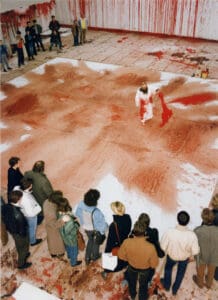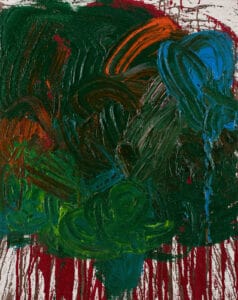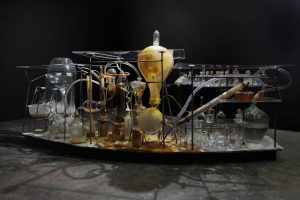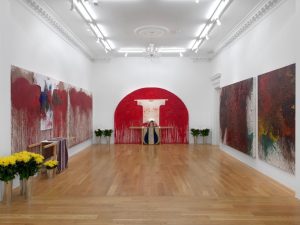The nitsch museum in Mistelbach is dedicating 2018 to the 80th birthday of Hermann Nitsch who is being honoured with a special exhibition: “Hermann Nitsch – LIFE AND WORK” sheds light upon the extraordinary course of the artist’s life on not only the creative but also, for the first time, the personal level. Conceived as a biographical tour and complemented by a frieze of works arranged by Hermann Nitsch himself, the exhibition traces an artistic career which is being comprehensively presented for the first time in the form of key works and original documents.
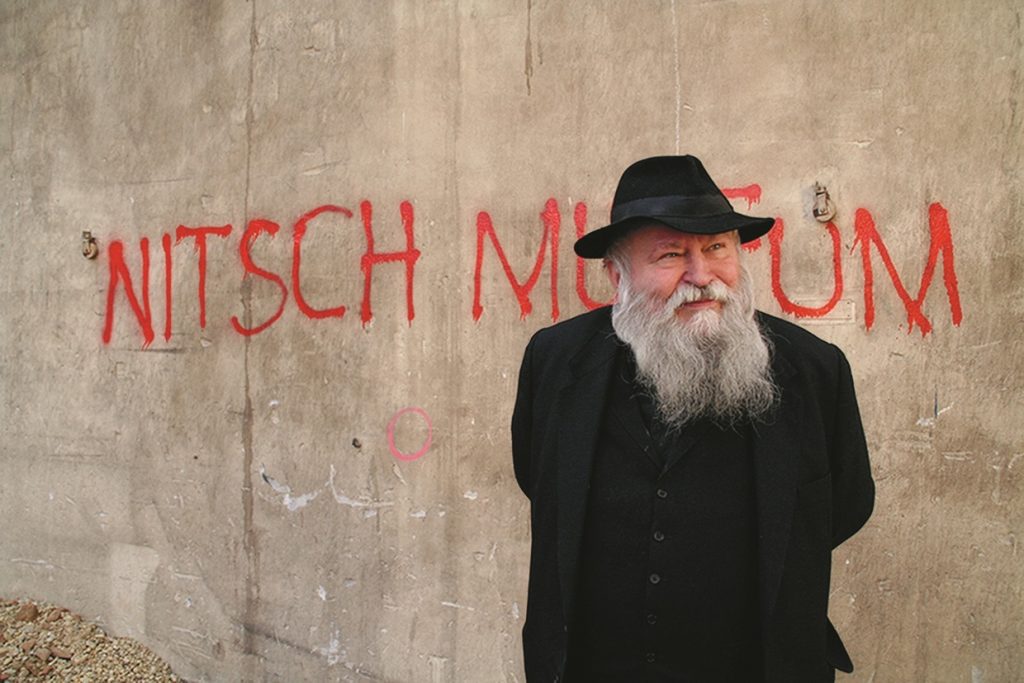
The exhibition “Hermann Nitsch – LIFE AND WORK” focusses on Nitsch’s artistic work of the past 65 years as well as on personal events that have had a special impact upon his development. The life and the work of the universal artist Hermann Nitsch are constantly, seamlessly merging. The exhibition conveys this interdependency, enabling the visitor to develop a profound understanding for Nitsch’s ideas and artistic approaches. The 130-metre-long biographical tour with the important works and original documents outlines the most significant phases in the artist’s life.
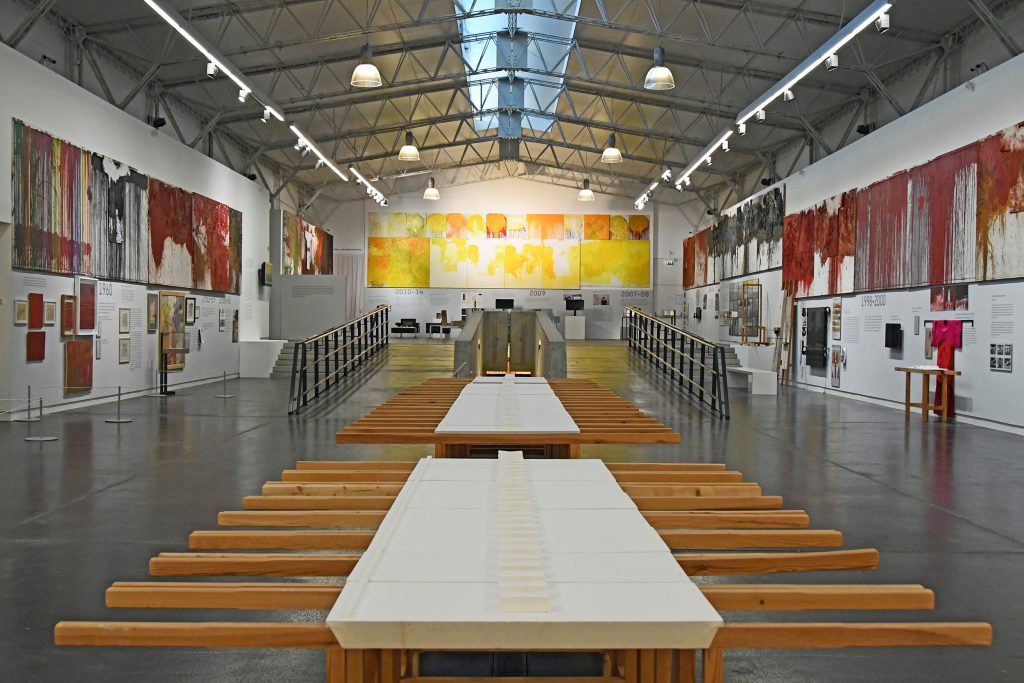
Hermann Nitsch – Life and Work (c) nitsch museum Mistelbach 2018
Opus I is amongst the highlights of the exhibition. One of Nitsch’s early splatter paintings it is being shown in the nitsch museum for the first time. A further highlight is the large-format collage Golden Love, which is rarely seen in public. Original documents, newspaper cuttings and films illustrate the most important stations of Hermann Nitsch’s life: his youth and training, his earliest artistic work, scandals triggered by his art, the Six Day Play and the acquisition and restoration of Schloss Prinzendorf in the Weinviertel which has become the focal point of his life.
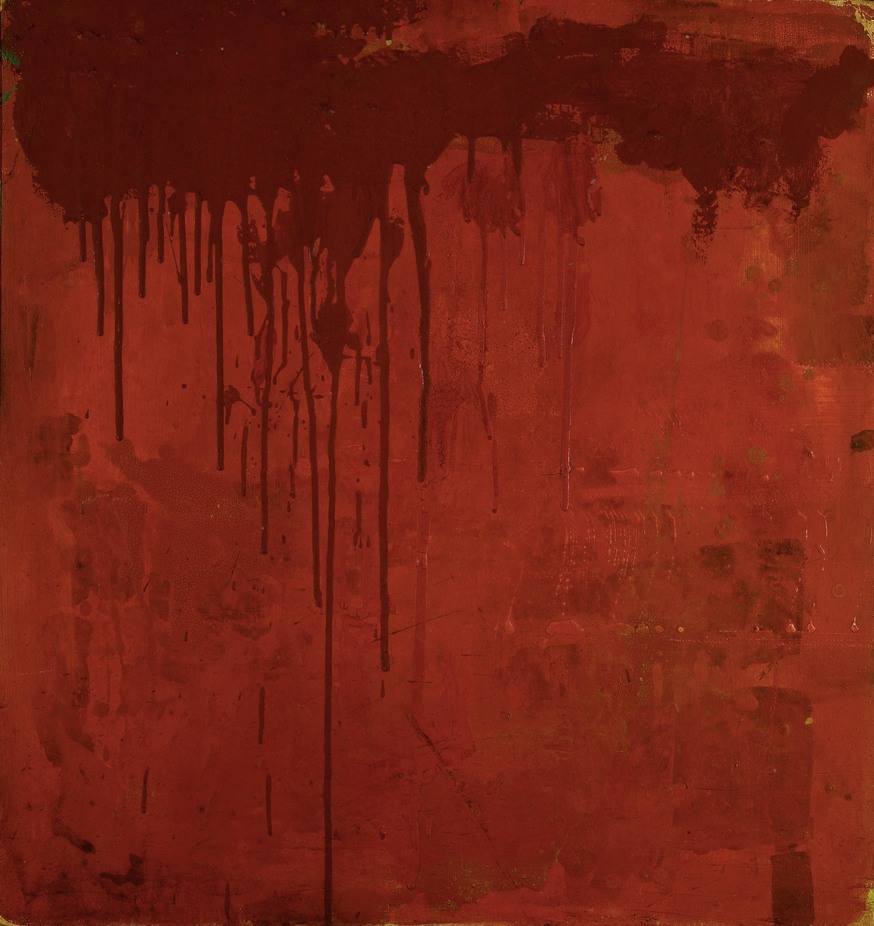
Herman Nitsch, Opus 1, 1960
“My work should be a way of learning about life, perception and sensation and has to be experienced with all five senses.”
(Hermann Nitsch)
One key objective of the exhibition is to offer visitors an insight into the interdisciplinary relationships and influences within the Orgien Mysterien Theater, the total work of art in which Nitsch combines the media of theatre, performance, actionism, painting, music and literature. In the Orgien Mysterien Theater all the artist’s efforts come together in the form of precisely composed, complex productions which challenge all the senses of the participants. Conceived by Nitsch as a celebration of resurrection and a cathartic experience, this crossing of boundaries is designed to capture existence in all its entirety and depth.
HERMANN NITSCH – Life and Work Annual Exhibition at the nitsch museum Mistelbach to – 5th May 2019
MORE: nitschmuseum.at
Find out about other great exhibitions:HERE

Hermann Nitsch, Golden Love, 1974, 158 x 323 cm Collage / colored pencil / gouache on paper / canvas Photo: Daniele Benassi (c) Atelier Hermann Nitsch, Manfred Thumberger
About The Artist
Born in 1938 as war loomed, raised during the post-war years and subsequently convicted on a number of occasions as a result of his artistic activity, Nitsch is now a holder of the Austrian State Prize and a celebrated global star. In the course of his creative trajectory he has performed more than 140 actions and 70 painting actions as well as over 60 concerts.
Brought up by his mother after the death of his father during the war, Hermann Nitsch spent his childhood in Floridsdorf in Vienna where he experienced the bombing raids and misery of the Second World War. He enjoyed a close relationship with his grandfather who recognised and encouraged Hermann Nitsch’s talent for drawing at an early age. After his training at the School for Graphic Arts in Vienna he became an assistant at the city’s Technical Museum. Nitsch soon began to feature in both solo and group exhibitions and his first action took place in Otto Muehl’s studio in Vienna in 1962.
Nitsch is amongst the founders and best-known representatives of Viennese Actionism as well as one of the world’s most versatile contemporary artists. His actions involving naked bodies, blood and the intestines of animals regularly triggered fierce protests. Whereas the artist initially poured red paint over huge canvases (“splatter paintings”) he gradually replaced this with real blood. Hermann Nitsch constantly underlines that “red is the most intense colour because it simultaneously symbolises both life and death.” The sensitisation of all our senses always was and remains the focus of Hermann Nitsch’s work.
Ostracized in Austria for many years, his actions first established themselves abroad in the form of his lifelong total work of art, the Orgien Mysterien Theater, while his paintings are also highly valued on the international art scene. Nitsch participated in documenta 5 and 7 in Kassel in 1972 and 1982 and in the Sydney Biennale in 1988, the year in which the Lenbachhaus in Munich staged the first major retrospective of his work. Austria acknowledged the significance of Hermann Nitsch’s art in 1995 when the Ku?nstlerhaus in Vienna held an exhibition and Nitsch was commissioned to design the sets for the opera “He?rodiade” at the Vienna State Opera. In 2005 the Burgtheater invited Nitsch to realise his “122nd Action” in the theatre and he was awarded the Great Austrian State Prize for Visual Art in the same year.
Hermann Nitsch’s works can be found in leading museums and galleries around the globe including the Museum of Modern Art, the Guggenheim Collection and the Metropolitan Museum (New York), Hudson Valley Center for Contemporary Art (Houston), the Gallery of Ontario (Toronto), the Tate Gallery (London) and the Muse?e National d’Art Moderne in the Centre George Pompidou (Paris). Two monographic museums also exclusively display the work of Hermann Nitsch: the nitsch museum in Mistelbach and the Museo Nitsch in Naples.

